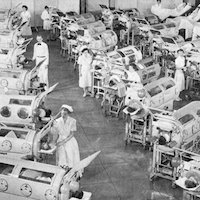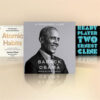Why We Can Thank a Polio Emergency for the Birth of Intensive Care
nature.com
An outbreak of polio in 1950s Denmark led one hospital to pioneer mechanical ventilation, constant monitoring of vital signs and other innovations that are saving lives to this day.
The COVID-19 pandemic has brought home the central role of intensive care units (ICUs) in saving the lives of those in critical condition in hospitals today.
Yet if you asked most people where the ICU concept came from, few would know that it was an outgrowth of a polio epidemic in Denmark.
In her brilliant new book, Hannah Wunsch, an anaesthesiologist and critical-care-medicine specialist at the University of Toronto, Canada, traces the origins of the modern ICU to 1952 and the Blegdam hospital in Copenhagen.
Buy the new book: The Autumn Ghost: How the Battle Against a Polio Epidemic Revolutionized Modern Medical Care
The book traces the origins of mechanical ventilation to the polio epidemic in Denmark in the 1950s. The outbreak led to the development of the “Engström ventilator,” which was the first mechanical ventilator to be used in an ICU. The book also explores the development of other life-saving technologies, such as constant monitoring of vital signs and the use of antibiotics.















